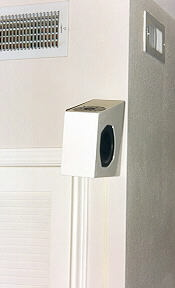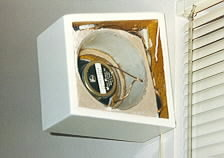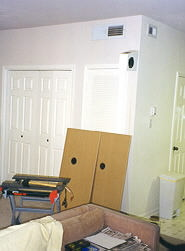It is hard to tell from this photo, but the back of the speaker is open. Thus, sound is free to eminate from the mid-range’s rear instead of being trapped inside a conventional box enclosure. This create’s a null in the sound field to the side of the speaker where the front and back wave cancel out. The side is pointed at the main listening position. The tweeter fires upward so that its energy reaches the listener indirectly. Why all the effort to have none of the sound go directly to the listener? To hide the location of the surround and prevent the localization of rear surround sound effects by the listener!
Many comercial dipole surround have two mid-ranges. One is on the front, the other is on the back. They are connected electrically opposite so that when the front driver pushes out, the rear driver is moving in (and visa versa). That mimics the effect of having the rear of the enclosure open. If connected electrically the same, the design would be bipolar.
Positioning in the listening room is important for making this dipole surround design properly. My apartment isn’t the greatest layout, but I have made do. Here note that the mounting location is on the side of the primary listening area. This points both the mid-range null and tweeter reflection at the listening location.


